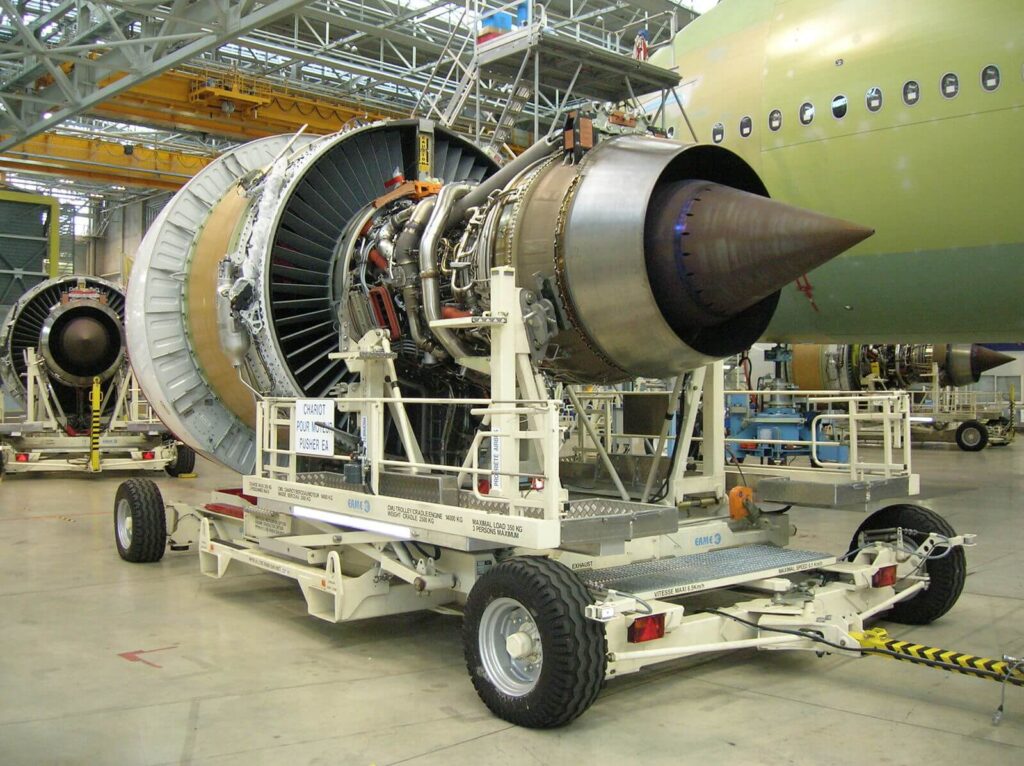Normally, most people wouldn’t know where Wuhan is. Under the current circumstances, it’s possible that most people are familiar with the name.
Wuhan is located in central China, has a population of eleven million, and has been one of the major industrial areas of China for decades, consistently promoting industrial development and change.
It has four scientific and technological development parks in three national development zones. It is home to over 350 research institutes, almost 2,000 high tech companies.
On top of that, Wuhan University and the Huazhong University of Science and Technology[1] – both respected institutes also call Wuhan home.
Why am I explaining this?
Well, it appears that Wuhan may deliver a completely clean aircraft engine technology that will help reduce the effects of Climate Change.
Current aircraft jet engines are known as High Bypass Turbofans. Running on a mixture of kerosene and air, they rely on spinning a very large intake fan and a number of turbines to incrementally pressurise the air drawn in at the front, which is then combined with the jet fuel to produce combustion.
The resulting high-pressure exhaust gasses exit the tailpipe at high velocity, creating thrust.
This is an elegant engineering solution, which unfortunately has an inelegant by-product – the exhaust comprises greenhouse gasses which have been proven to increase the rate of climate change.
Whilst commercial aviation (Passenger and Freight flights) contributes less than 3% to the annual global CO2 pollution, it still amounts to about 918 million tonnes of the stuff, so any reduction is most welcome.
It appears that those clever folk at the Institute of Technological Sciences at the Wuhan University (Dan Ye, Jun Li and Jau Tang) have designed a jet engine that relies upon a plasma drive to generate thrust.
The basic theory of such a drive is fairly simple. If a source of compressed air is subjected to bombardment with microwave radiation, the air mass is ionised, turning it into Plasma and heated to a very high temperature – about 1000ºC.
No Kerosene. No Igniter system. No complex turbines. No overly complicated fuel metering and injection systems.
All that is needed is a source of high voltage electrical power to generate the microwave energy required (using a device called a Magnetron) and an air compressor to deliver the required airflow.
Boeing has already developed highly effective electrically-driven systems to replace engine-driven air compressors used for air conditioning and pressurisation. The 787 is a truly electric jet – conventional engine-driven hydraulic systems have been replaced with large electric motor driven pumps, hydraulic wheel brakes replaced with electrically operated units.
In order to power all of these massive electrical loads, the 787 has a very heavy-duty generating and distribution system. Such high loads produce a lot of heat, so temperature control is provided by a liquid cooling system running through a heat exchanger. Ingeniously, this provides heating for the aft cargo holds.
Theoretically, the same electrical technology could be used to run high capacity compressors and a powerful microwave magnetron.
Engine output power may be controlled and varied by either adjusting the pressurised airflow rate or increasing or decreasing the power of the microwave field being generated.
Research is at an early stage, but the team at Wuhan have managed to generate a plasma flow with sufficient power to lift a small steel ball. Using only 400w of microwave energy (2.45Ghz) and a flow rate of 1.45 m3/hour they generated a jet propulsion force of 28n/kW. Scaled up, this is equivalent to the output of a conventional jet engine.
There are other advantages to using such technology. A typical widebody jet such as a Boeing 747-400 may have a maximum fuel capacity of 138,500 kg – fuel that would no longer be needed.
Future aircraft designed to use this new type of engine could be engineered to use the weight advantage for carrying either extra passengers or cargo.
A double benefit from this simple design.
A simplified engine without complicated turbines and compressors, lighter, easier to maintain, easy to control, with no associated fire risks.
A simplified aircraft structure, without the need to carry thousands of litres of kerosene.
An aircraft that is much kinder to the environment, exhausting just air into the atmosphere.
An aircraft that would be far cheaper for airlines to operate.
What’s not to like?
- [1] Wuhan National Research Centre for Optoelectronics (WNLO), which has published the largest number of academic publications among the top three optical centres worldwide. http://www.wnlo.cn/
- Wuhan National High Magnetic Field Centre (WHMFC), which can generate the highest intensity pulsed magnetic fields in Asia, third highest in the world. http://whmfc.hust.edu.cn/english/About_Us.htm
- Centre for Gravitational Experiments (CGE), which contributes the most accurate Newtonian gravitational constant in the world. http://ggg.hust.edu.cn/English/Home.htm

